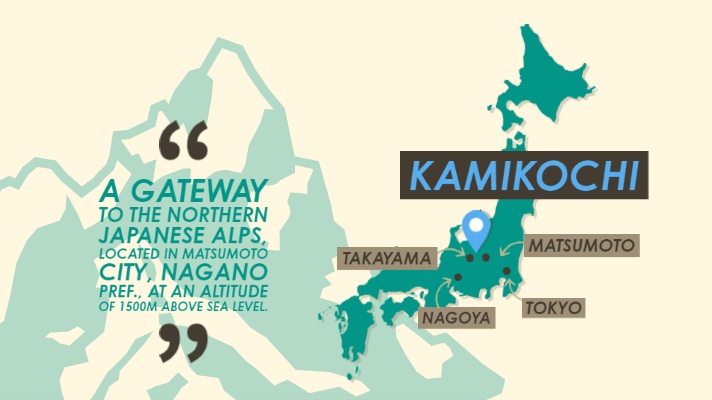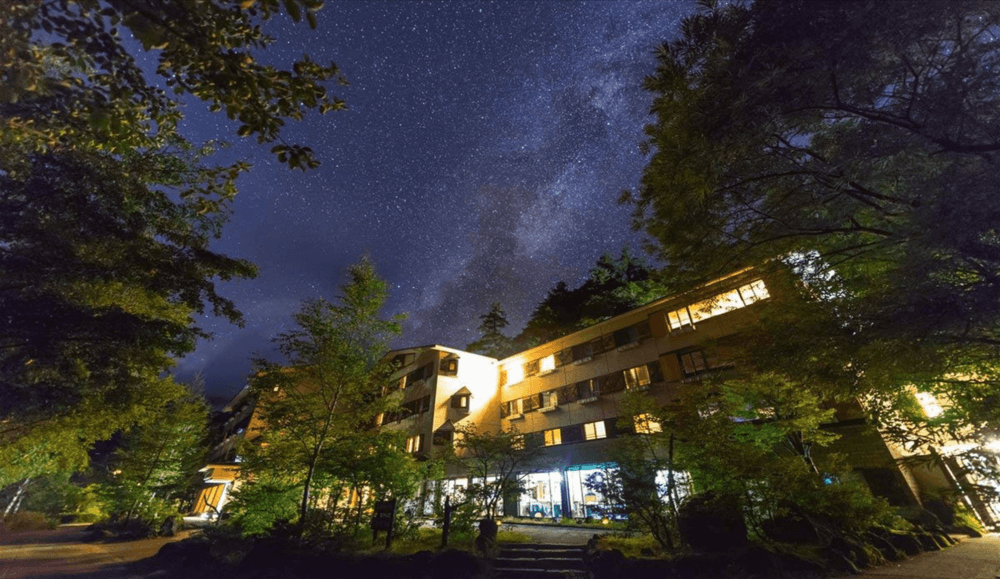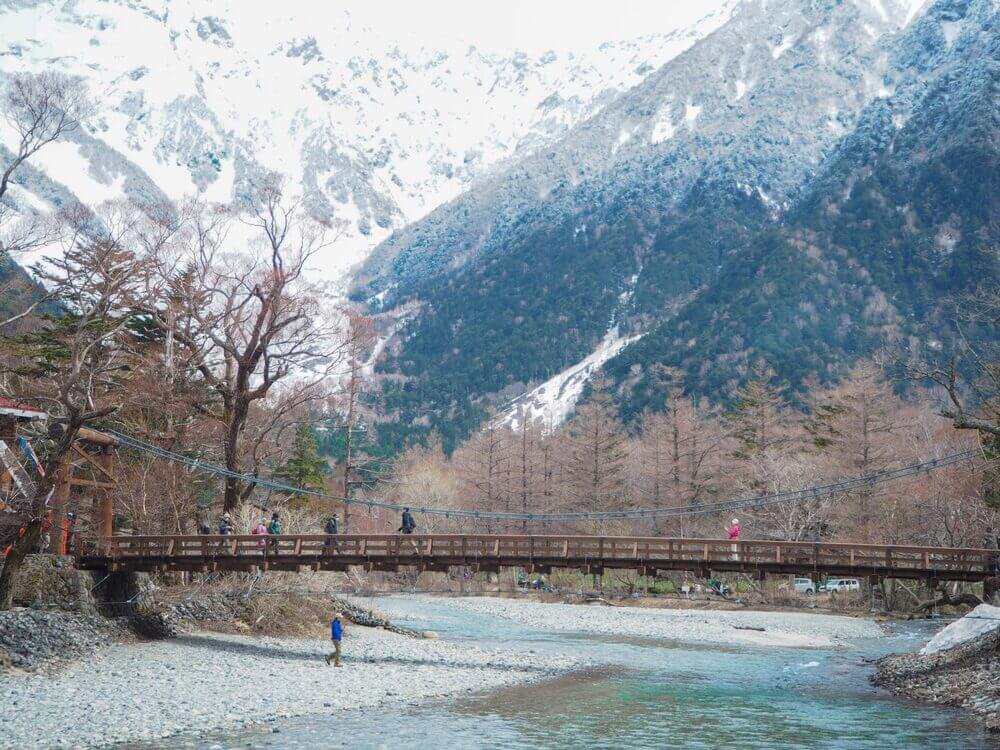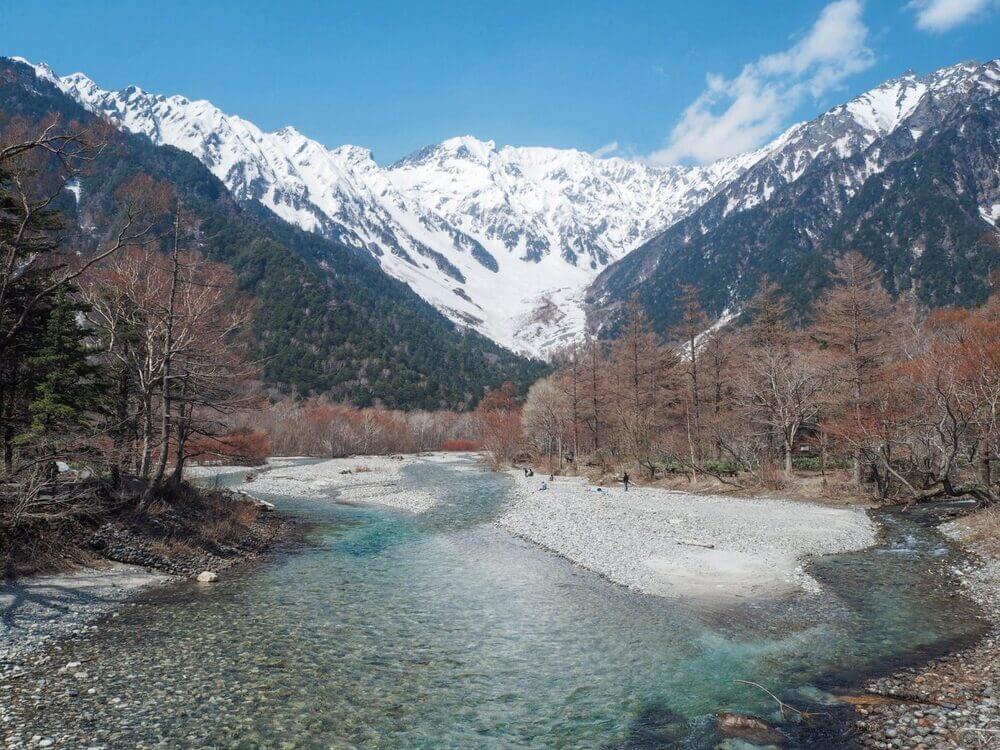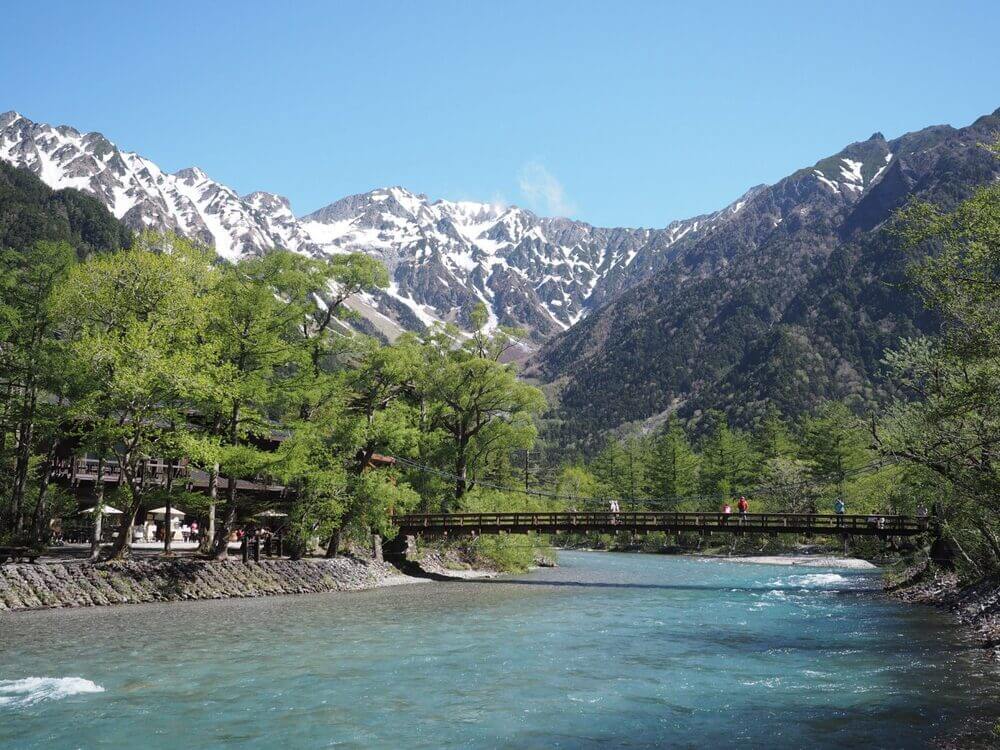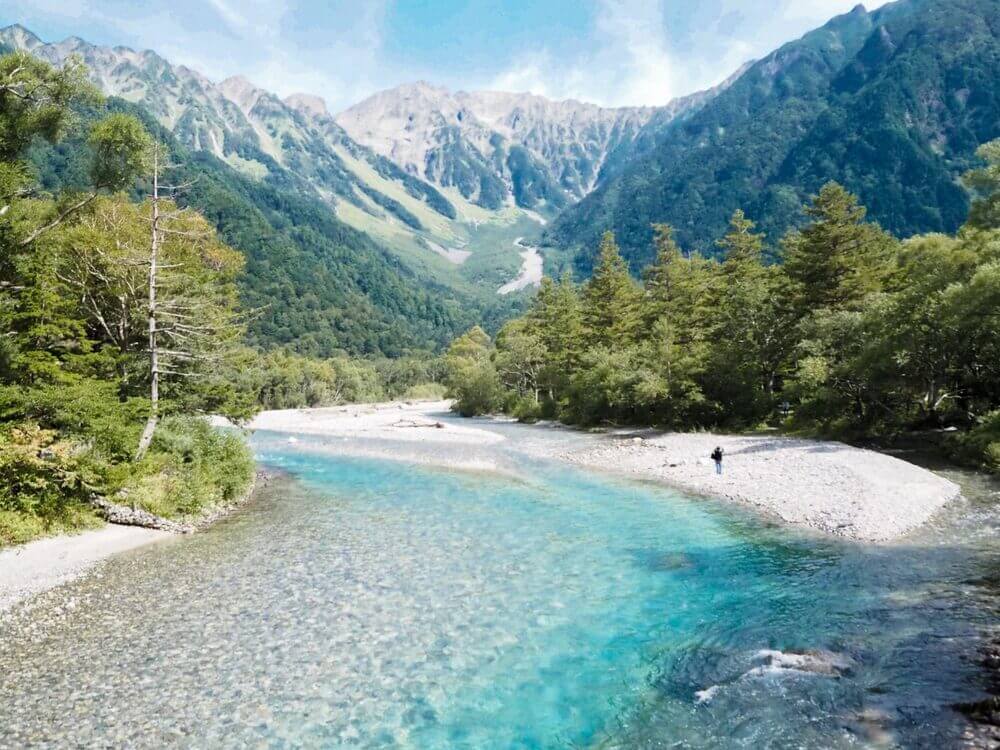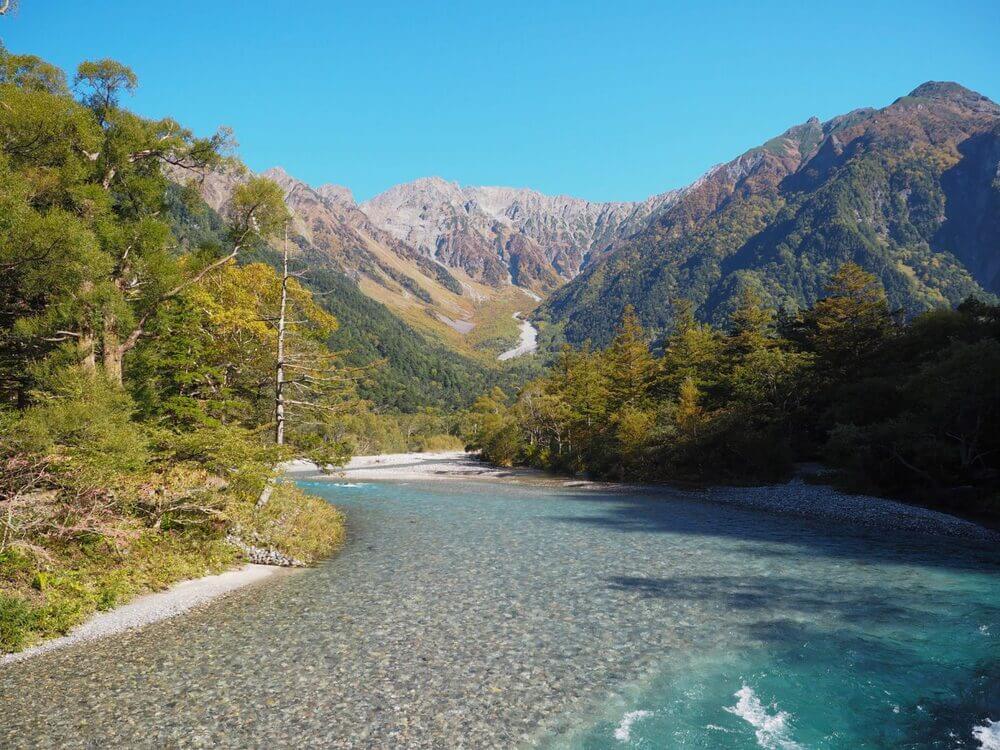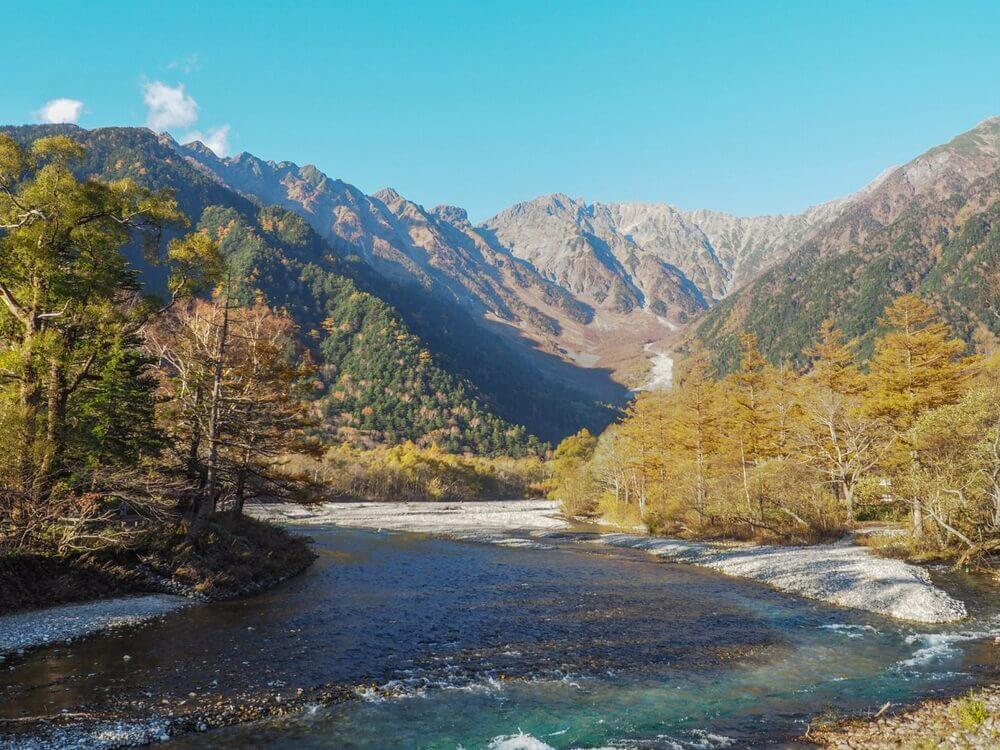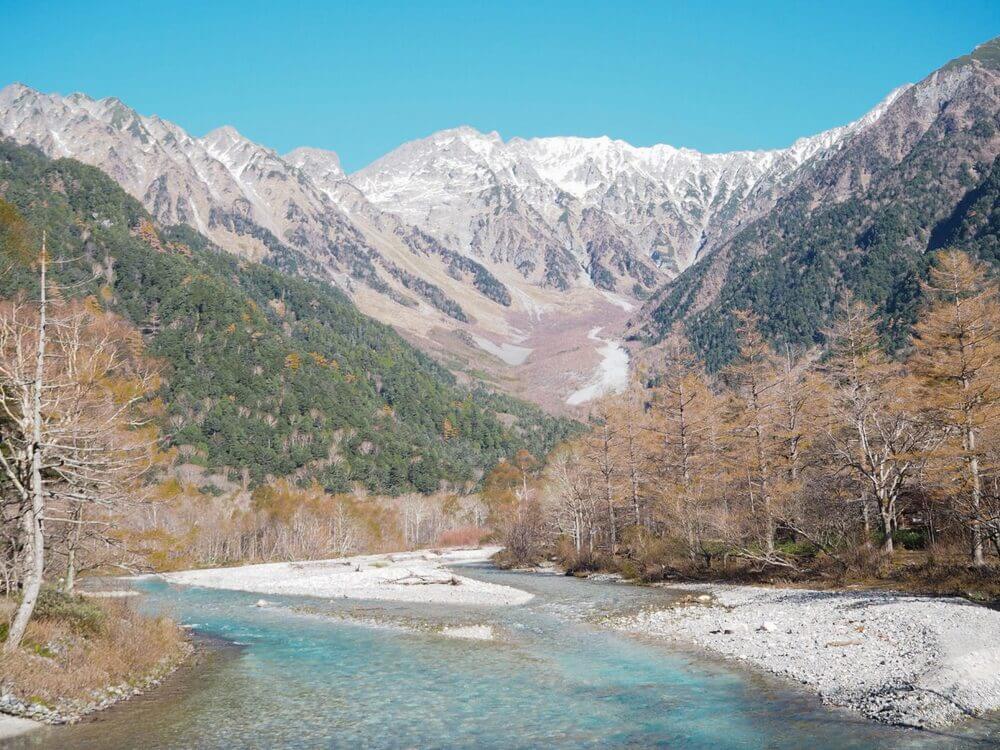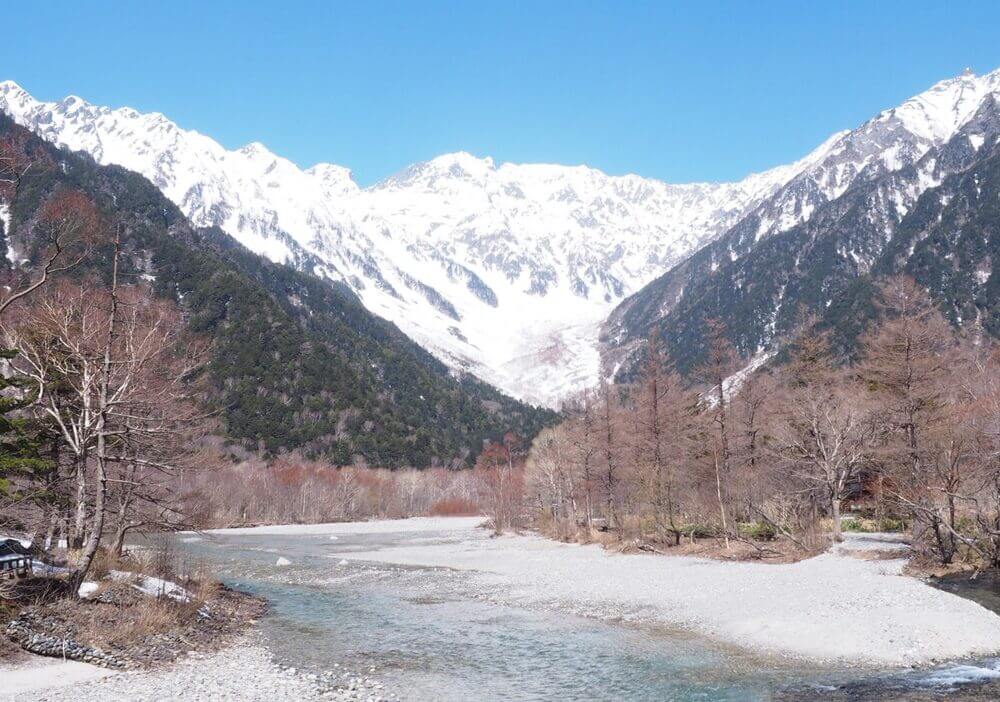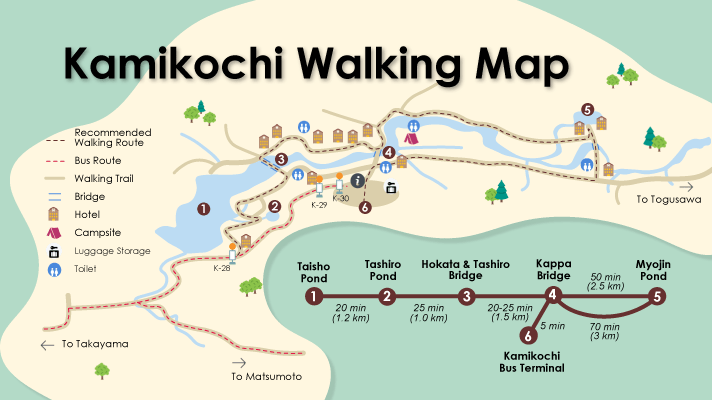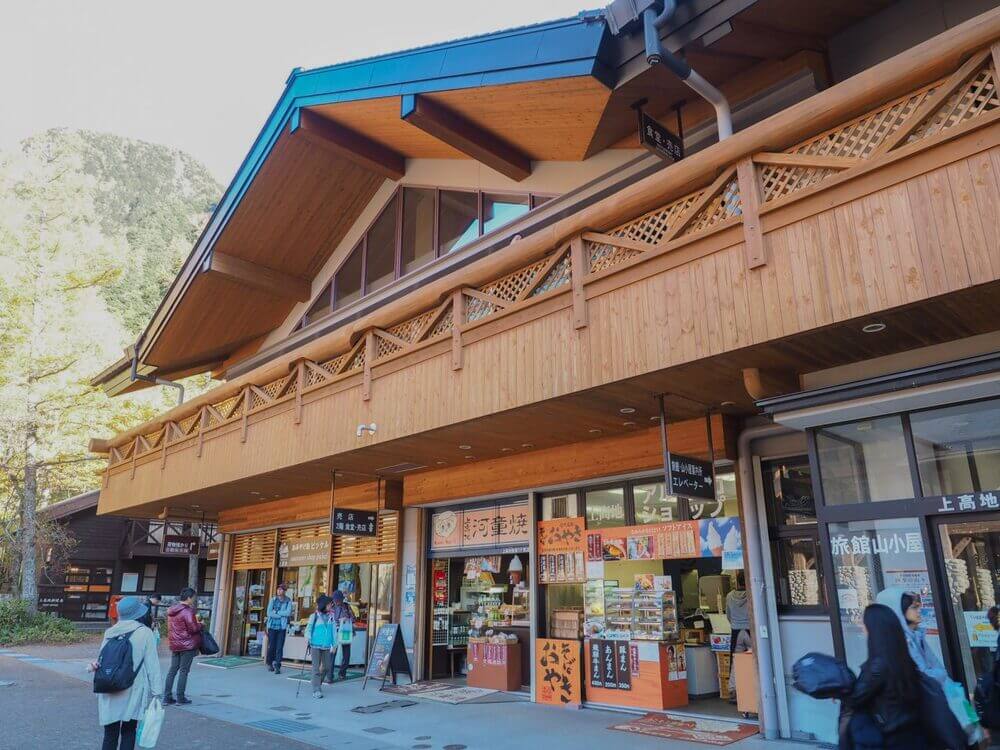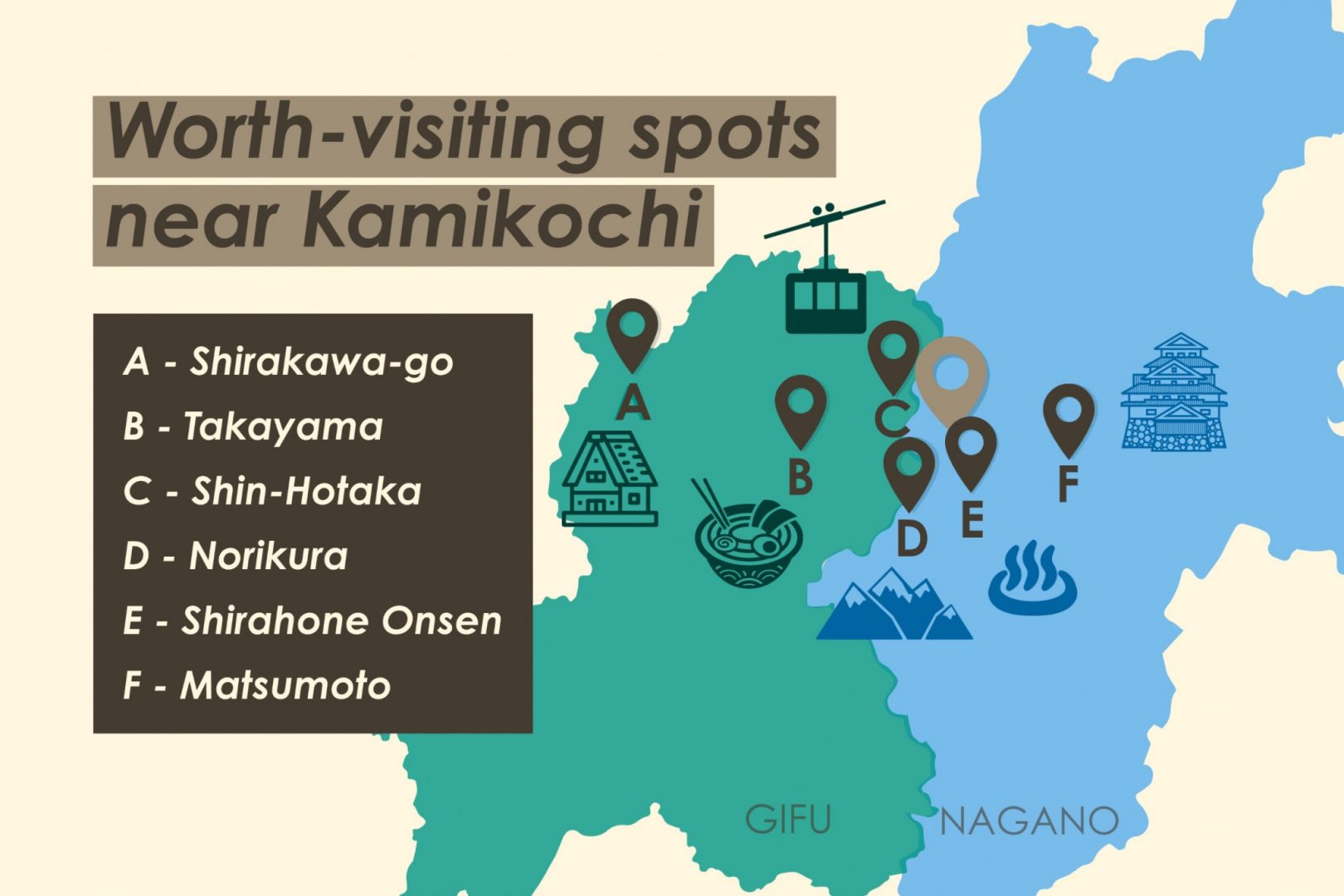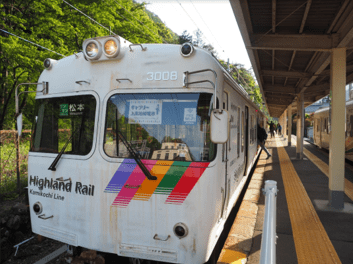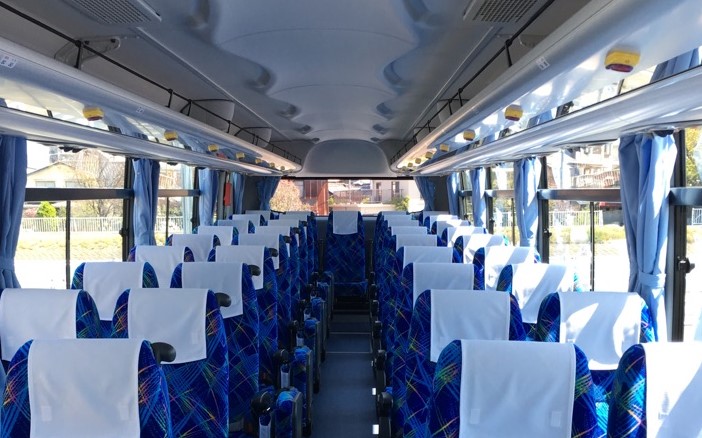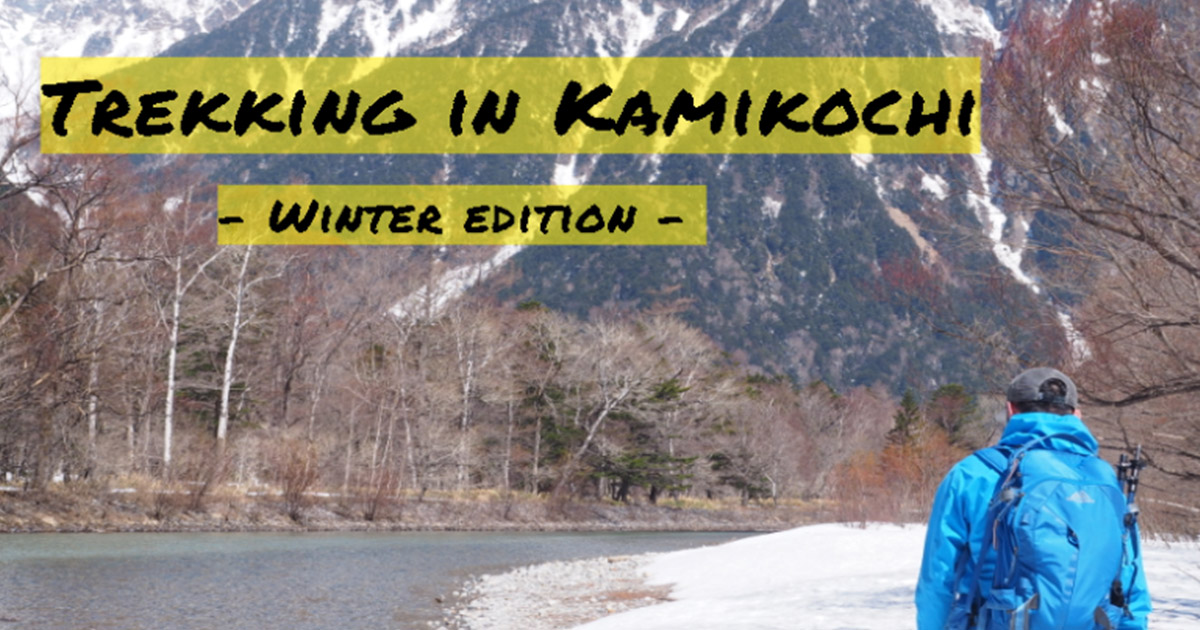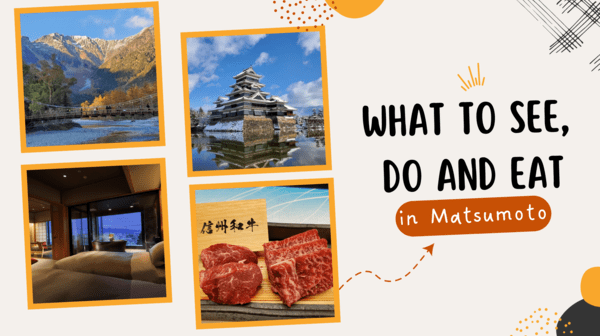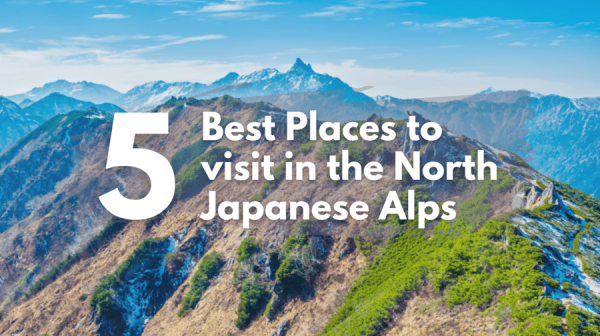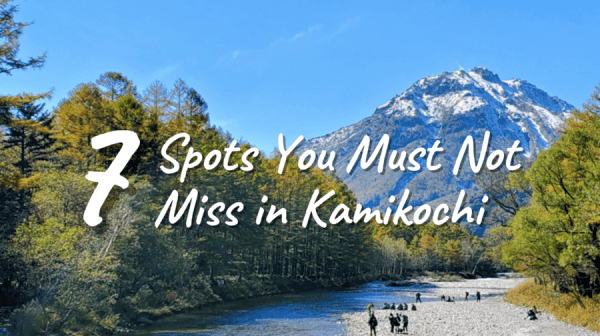As the title says, this post is a comprehensive guide for those who are planning to visit Kamikochi. This will cover all the common questions and things you should know before going, from basic information to tips that will help you enjoy more of Kamikochi.
Summary
- 1. Where is Kamikochi?
- 2. Things to know before going to Kamikochi
- 2.1. Opening season
- 2.2. No private car policy
- 2.3. Hotels, lodges and campsites
- 2.4. Do’s and Don’ts
- 3. Best time to visit Kamikochi
- 3.1. Spring
- 3.2. Summer
- 3.3. Autumn
- 3.4. Winter
- 3.5. Temperatures and clothing
- 4. Recommended walking route in Kamikochi (with map)
- 5. Shops and restaurants
- 6. Worth-visiting sightseeing spots nearby Kamikochi
- 6.1. Norikura
- 6.2. Matsumoto
- 6.3. Shirahone Onsen
- 6.4. Takayama
- 6.5. Shirakawa-go
- 6.6. Shin-Hotaka Ropeway
- 7. Getting to Kamikochi
- 7.1. From Matsumoto to Kamikochi
- 7.2. From Tokyo to Kamikochi
- 7.3. From Osaka to Kamikochi
- 7.4. From Nagano to Kamikochi
- 7.5. From Takayama to Kamikochi
- 7.6. Self-Drive to Kamikochi
- 8. Getting Around Kamikochi
- 8.1. From Kamikochi to Norikura
- 8.2. From Kamikochi to Shirahone Onsen
- 9. Recommended Bus Passes
- 9.1. 2-Day Free Passport (Currently unavailable)
- 9.2. 4-Day Alps WIDE Free Passport
- 9.3. Alps Crossing Ticket (Kamikochi-type)
Where is Kamikochi?
Kamikochi is a scenic valley, located at an altitude of 1,500m in Nagano Prefecture. It lies in between Matsumoto and Takayama city, which is why it is a popular side-trip from the two cities. If you look at the map, it is right in the middle of the country so the distance to Kamikochi from both Tokyo and Nagoya is almost the same. However, getting to Kamikochi from Tokyo is a little more convenient due to the more frequent direct bus service.
Things to know before going to Kamikochi
Opening season
Kamikochi isn’t open for visitors all year. The official opening period is from April 17 until November 15 of every year and it closes in the wintertime due to heavy snow. During closing season, no shops or restaurants remain open inside the park, which means of course no bus going inside, either. The only way to go there is by walking.
No private car policy
If you’re thinking of renting a car and driving around on your own, you need to know that private cars are not allowed inside Kamikochi. The reasons are to prevent noise and air pollution, and also to ease traffic and congestion. Visitors with private cars must park at Sawando parking if they are coming from the Matsumoto side, or at Akandana Parking if they come from the Takayama side. Then, use a public bus to get to Kamikochi.
Hotels, lodges and campsites
Although hotel prices inside the park are relatively high (from 20,000 to 60,000 yen), to fully enjoy the natural wonders, we recommend you stay overnight in Kamikochi for at least one night. If you have a limited budget, you can opt to go camping or stay in a well-equipped cabin at Konashidaira Campsite, managed by the Nihon Alps Kankou. This campsite is the closest one to the bus terminal.
There are around 30 hotels and lodges, and 3 campsites in Kamikochi. If you are looking for a relaxing and quiet stay with a cozy natural hot spring during your stay, Kamikochi Lemeiesta Hotel should definitely be on your list.
Another option is to stay in the nearby downtown like Matsumoto or Takayama and visit Kamikochi as a day trip. This can save you a lot of hotel spending with a greater variety of hotels to choose from.
Recommended hotels in Matsumoto
Do’s and Don’ts
Do’s:
- Bring home your own trash.
- Bring a bell with you (to chase away the bears).
- Submit your trekking itinerary if you plan to climb up mountains.
- Pay 100 yen when using a public toilet (no change).
Don’ts:
- Feed and touch animals.
- Trespass into not allowed areas.
- Fly drones.
- Throw away your leftover food (that will make bears come out more often).
Best time to visit Kamikochi
Kamikochi has so much charm to amaze us in every season and will make you want to come back again and again. We cannot really choose the “best” time, but we can give you an idea of what Kamikochi looks like in each season.
Spring
Spring in Kamikochi is quite different from the downtown. Just after the park is opened until early May, there is still some snow left on the ground and the temperature can drop to single-digit degrees Celsius, so it feels more like winter, especially if the weather is overcast or windy. So, please come prepared with winter clothes. Another thing you should know is that some shops and hotels are still closed during the first 1-2 weeks after the park is open.
After the Golden Week holidays, all the leaves become more vivid in color as the temperature rises. The temperature can fluctuate during the day, but is still very comfortable in general. It is considered the off-season for domestic visitors, making this another reason for you to consider traveling to Japan after this long holiday.
Summer
Summer in Kamikochi usually starts from around July until mid-September. In general, the temperature in Kamikochi is about 5-9 degrees Celsius lower than in Tokyo which makes it a popular destination to escape the harsh summer heat for the Japanese. It is the perfect season for those who want to do hiking and climbing. But do remember to avoid the Obon Holidays (August 11-16), you may have to wait for hours just to get on a returning bus. Yes, it is that severe!
Autumn
Without a doubt, this is by far the most popular travel season in Kamikochi. The peak season for autumn leaves viewing is very hard to predict as it entirely depends on the weather condition of that year. Normally, the peak season is around the middle of October. Some years, it can be as early as the beginning of October. The bad news is that Japan is often struck by typhoons in September and October. May luck be with you!
The symbol of Autumn in Kamikochi is yellow white-birch trees. The leaves remain yellow for quite long, even until into early November. According to our observations, the number of sunny days in early November (Nov 1-5) is very high. So we think another great time to visit Kamikochi is during this period. Good weather, autumn leaves and fewer crowds! In the last week before closing, there’s a higher chance of snow and the park is much quieter and colder. But if it’s a sunny day, it is still worth going.
Winter
Just as mentioned above, Kamikochi is closed during the winter season and the only way to go there is by walking. You must submit your trekking itinerary before going, so our advice is to hire a local guide as they can help you with all these processes.
Read also:
Winter Trekking in kamikochi
Temperatures and clothing
Weather and temperature in the mountainous area can be completely different from downtown. Before going, make sure you check the forecast and prepare yourself.
| Temp./ Month | Apr | May | Jun | Jul | Aug | Sep | Oct | Nov |
|---|---|---|---|---|---|---|---|---|
| Highest | 14.2 | 17.6 | 19.4 | 22.8 | 23.3 | 18.1 | 13.3 | 8.6 |
| Lowest | 1.0 | 4.8 | 8.5 | 13.4 | 14.1 | 9.1 | 4.6 | -0.4 |
Average highest and lowest temperatures of each month (in degree Celsius)
It is best to wear clothes in layers so that it is easy to adjust according to the changing weather. Below is our guide to what you should wear in each month for walking around the flat area of Kamikochi (Taisho Pond ~ Myojin Pond), not for mountain climbing.
Late Apr – Early May: During the daytime, you’ll at least need to wear a fleece jacket, gloves and a neck warmer. Dress like it is late winter.
Late May – Early Jun: The weather gets warmer, but the temperature can be very different between day and night. A windbreaker is an essential item. Wear a down jacket and gloves when you go out for a walk in the morning and at night.
June – Early Jul: This is the season of rain, so in addition to a windbreaker a poncho or rain gear is also a must.
Late Jul – Aug: The temperature is comfortable when being under the shades. A short or long sleeve shirt will do but it’s better to bring a windbreaker in case of bad weather.
September: As the weather starts to get colder, bringing a fleece jacket is recommended. In the morning, temperature can drop below 10 degrees at the beginning of the month and can even go down below 5 degrees at the end of the month.
Early Oct: Wear a fleece jacket, gloves and a neck warmer. A down jacket is necessary in the morning and evening.
Late Oct – Early Nov: Dress like it is the middle of winter. (Down jacket, neck warmer and gloves)
Recommended walking route in Kamikochi (with map)
Our recommended route is from Taisho Pond to Myojin Pond, via the Kappa bridge. As this course is very easy with almost no ups and downs, it is recommended for any healthy adult. Small kids may get tired halfway, so you can rest around the Kappa Bridge and decide whether to go further or not. The second half from Kappa Bridge to Myojin Pond is a little harder to walk compared to the first half. Sneakers will do for this course, but trekking shoes are preferable.
Distance: approx. 9.2 km
Time required: approx. 3 hrs. (Photo taking time is not included.)
Elevation: From Taisho Pond (1,490m) to Myojin Pond (1,520m)
Route: Taisho Pond > Tashiro Marsh > Hotaka/Tashiro Bridge > Kappa Bridge > Myojin Pond > Kappa Bridge > Bus Terminal
The most efficient way to do this course is to get off the bus at K-29 Taisho Pond bus stop and follow our recommended walking course on the map. Or you can get off at the bus terminal and head to Myojin Pond first, then walk downstream to Taisho Pond and board a returning bus from there.
Read also:
● Climbing an active vocalno “Mt. yake” in one day
Shops and restaurants
Convenience stores are at every corner of the street in Japan, but you won’t find any in Kamikochi. The nearest one is a 1-minute walk from Shin-Shimashima station.
In the park, there are a few shops around the bus terminal and inside the tourist visitor center, but they mostly sell souvenirs and equipment for trekking and camping. Around the Kappa Bridge and on the second floor of the bus terminal, there are restaurants serving delicious local dishes at reasonable prices. Hotels and lodges also welcome non-staying guests to use their restaurants for lunch.
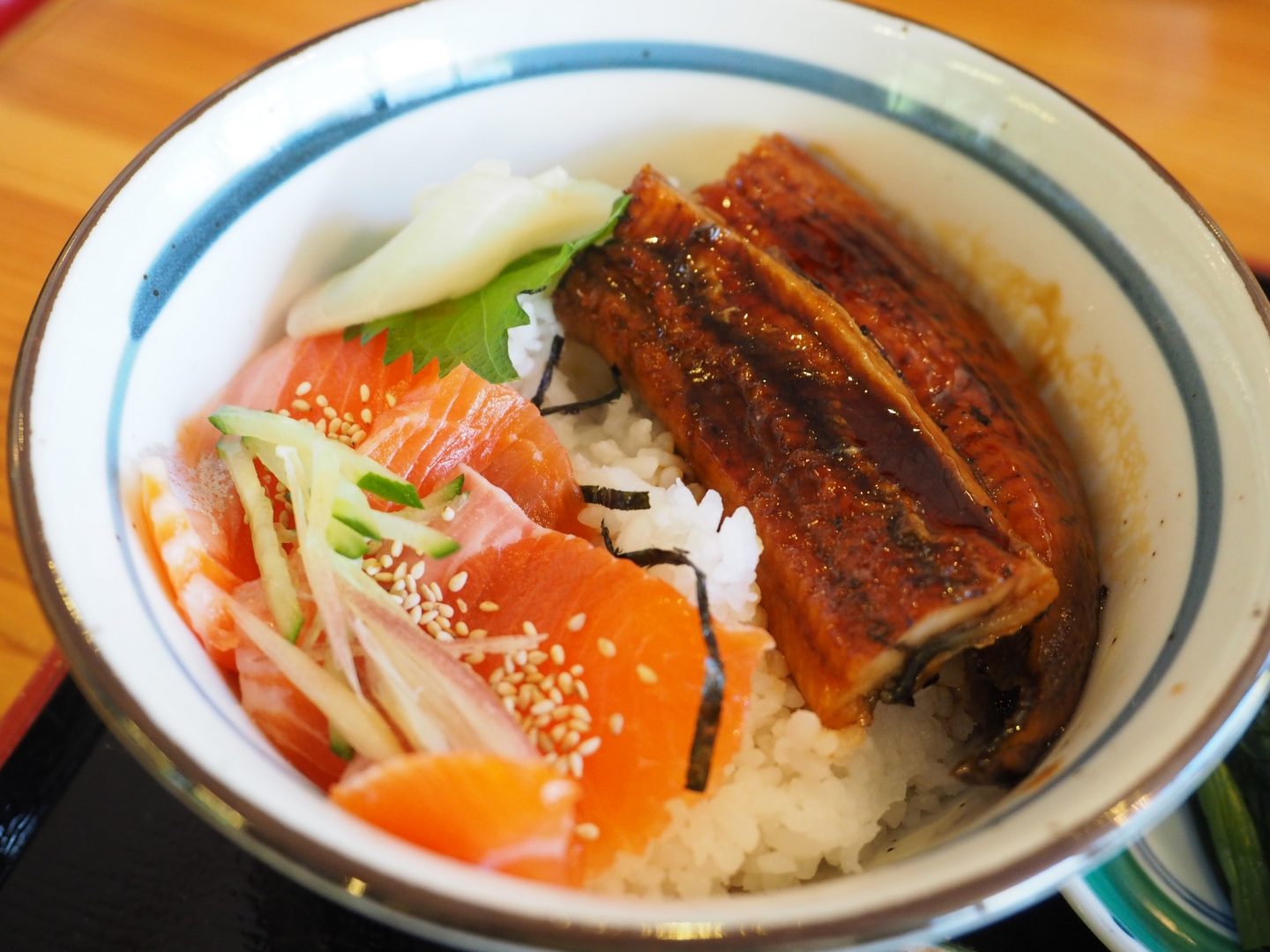
If you want to avoid the crowd, you can buy a lunch pack from a convenience store and go on a picnic wherever you what. Just remember that you need to bring your trash home.
Worth-visiting sightseeing spots nearby Kamikochi
Instead of hopping between regions, how about exploring the hidden amazing places around the area?
Norikura
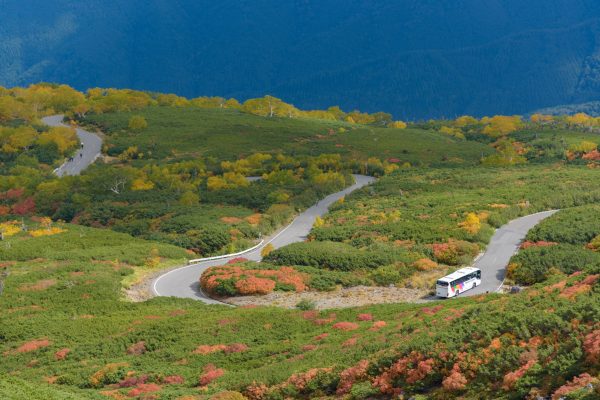
Divided into 2 areas, Norikura Kogen (highlands) and Norikura Tatamidaira (the mountain top area), Norikura has so much to offer for anyone that loves to be surrounded by nature with plenty of outdoor activities and natural hot springs.
Read also:
● Climbing the highest peak (3,026 m) of Mt. Norikura in just 3 hours
● Hiking through the autumn leaves in Norikura
Matsumoto
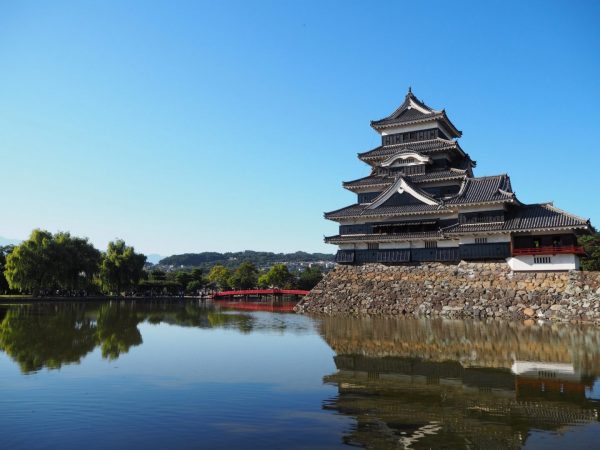
Famous for its iconic Matsumoto Castle and for being the birthplace of famous artist “Yayoi Kusama”, Matsumoto is a must-visit city when you are around here. It is only 1.5 hours from Kamikochi. Besides, there are also plenty of historical and cultural attractions.
Read also:
● Discover the Ukiyo-e, pictures of the floating world
● East meets west at the former Kaichi School
Shirahone Onsen
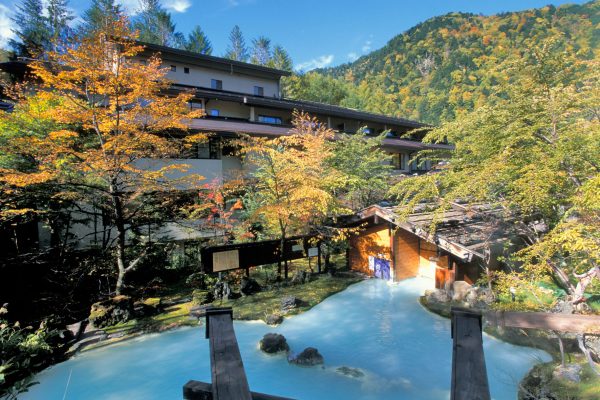
One of the hidden hot springs with a long history dating back to the Kamakura period (1185-1333). What’s so special about this hot spring is its milky white spring water. One of the lodges (Awanoyo Ryokan) also offers a traditional mixed-gender bath, highly recommended for the not-shy ones.
Takayama
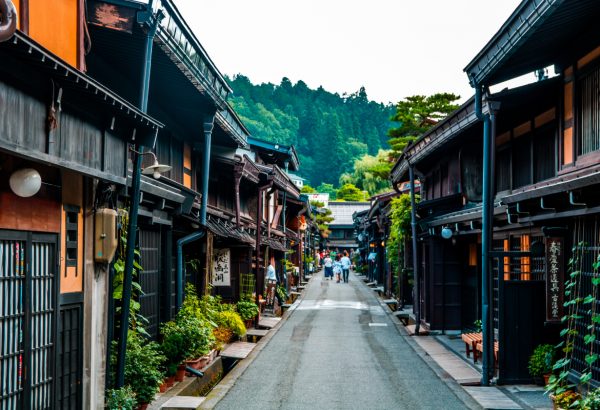
Known as the “Little Kyoto”, Takayama city is a well-preserved post town that reminds you of Japan in the olden days. Not only the beautiful townscape attracts visitors from all over the world, but its tender and juicy “Hida beef” is also another reason for you to visit this town.
Shirakawa-go
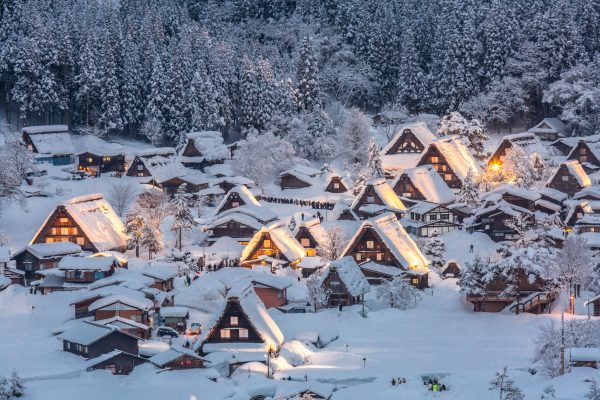
Only about 1 hour away from Takayama, Shirakawa-go is designated as a world heritage site with its unique “Gassho-style” farmhouses. This place is exceptionally beautiful in winter during the light-up event but that doesn’t mean it’s not worth going to in other seasons!
Shin-Hotaka Ropeway
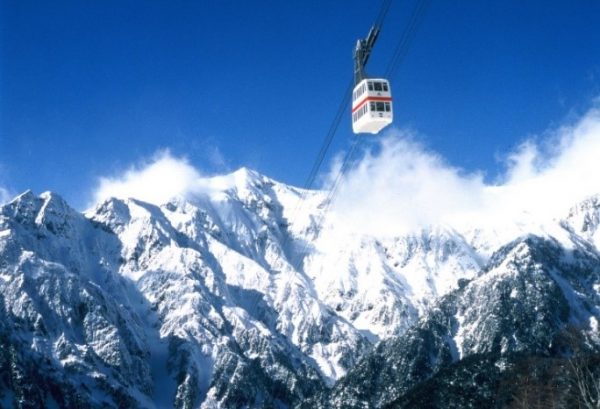
Want to stand above the clouds without breaking a sweat? Shin-Hotaka is the place for you. The double-decked ropeway will transport you to an elevation of around 2,150m in a wink. From up there, you can enjoy the majestic view of the Hotaka mountain range.
TIPS All the areas mentioned above are covered by the 4-Day Alps WIDE Free Passport Ticket.
Getting to Kamikochi
Kamikochi is one of the most easy-to-access national parks in Japan with an extensive bus network, provided by Alpico and other bus operators.
From Matsumoto to Kamikochi
Matsumoto is a perfect base to begin your journey to Kamikochi. It takes 30 minutes by train from JR Matsumoto station to Shin-Shimashima station. The train (Kamikochi line) departs from platform no.7. Please note that this train is not operated by JR, thus not covered by any JR pass.
After getting off at Shin-Shimashima terminal station, you need to change to the bus bound for Kamikochi and continue the journey for another 1 hour to reach Kamikochi. Services are frequent with trains and buses departing every hour.
Now,we are also operating 2 direct buses to Kamikochi, departing from Matsumoto Bus Terminal at 5:30 and 10:15. This special bus is called “National Park Liner”. Read how to get to Kamikochi in detail in the article below.
Updated for 2024: An Ultimate Guide on How to Travel Between Kamikochi and Matsumoto by Bus
From Tokyo to Kamikochi
Don’t want to bother with transfers? Then a direct bus is your option. From the Tokyo area, there are 4 bus lines available.
Buses from Tokyo station and Shinjuku Expressway Bus Terminal depart late at night (night bus) and early in the morning (day bus). When booking, please choose your seat type. The 3-row-seat type bus (green car) provides you with a more comfortable seat and complimentary amenities for a small extra fee. (Please note that the night bus has a longer travel time, so that it arrives in Kamikochi after sunrise)
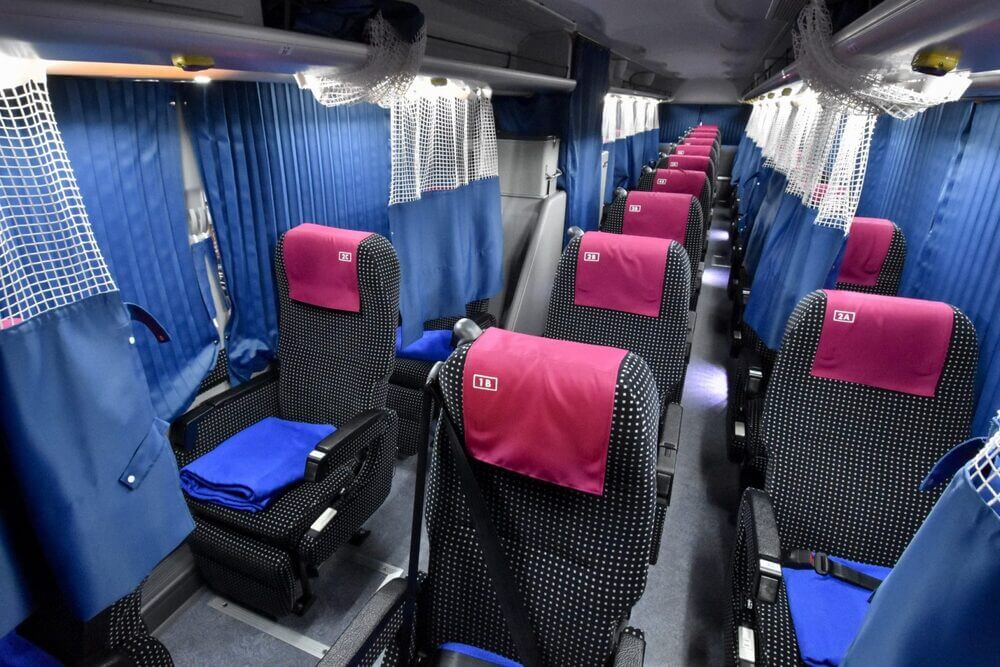
The buses departing from Shibuya and Kawagoe only have a day bus service with standard 4-row seat type available.
See timetable for Shibuya – Kamikochi Line >
See timetable for Kawagoe/Omiya – Kamikochi Line >
Another way to travel to Kamikochi from Tokyo is to use the JR limited express train Azusa (2.5-3hrs – 6,900 yen) or Alpico highway bus (3.15hrs – 4,100~4,500 yen) to get to Matsumoto first, then change to a local train and bus.
From Osaka to Kamikochi
There are 2 roundtrips daily. The night bus departs late at night, using a 3-row-seat type bus (green car) for more comfort for a longer journey, while the day bus departs early in the morning with a standard 4-row-seat type bus. (Please note that the night bus has a longer travel time, so that it arrives in Kamikochi after sunrise)
From Nagano to Kamikochi
This service operates only 1 roundtrip daily. The one-way journey takes around 3 hours. The standard 4-row-seat type bus will be used for this route.
From Takayama to Kamikochi
From Takayama, take a 1-hour bus ride to Hirayu Onsen, then transfer to a bus bound for Kamikochi for another 30 minutes.
Self-Drive to Kamikochi
For those who want to self drive to Kamikochi, please park your car at Sawando or Akandana Parking and transfer to a shuttle bus to Kamikochi. (Private cars are not allowed into the national park.)
Getting Around Kamikochi
From Kamikochi to Norikura
From Kamikochi, please board a bus to Sawando Bus Terminal and transfer to a bus bound for Norikura Kogen there.
From Kamikochi to Shirahone Onsen
From Kamikochi, please board a bus to Sawando Bus Terminal and transfer to a bus bound for Shirahone Onsen there.
Recommended Bus Passes
2-Day Free Passport (Currently unavailable)
Coverage area: Matsumoto, Kamikochi, Norikura and Shirahone Onsen
Price: 7,600 yen (9,100 yen for 3-day use)
4-Day Alps WIDE Free Passport
Coverage area: Matsumoto, Kamikochi, Norikura, Shirahone Onsen, Takayama, Shirakawa-go, Shin-Hotaka Ropeway, Gero Onsen and more
Price: 14,000 yen (16,300 yen with Shin-Hotaka Ropeway round trip tickets)

